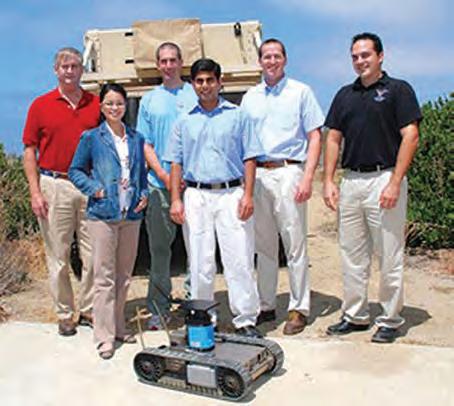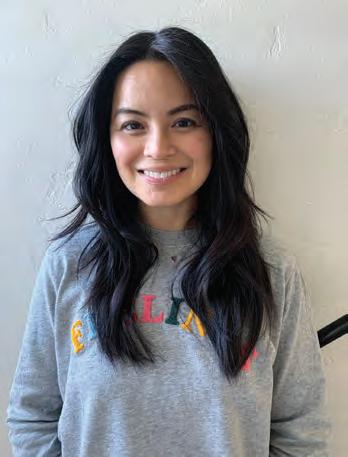
5 minute read
Alumnae Spotlight
ESTRELLINA PACIS RIUS ‘97
NASA Ames Systems Engineer
Estrellina (Ester) Pacis Rius '97 works for NASA Ames and the Naval Information
Warfare Center, Pacific (NIWC PAC). As the Project Lead for multiple robotics projects focused on developing small ground robots used by the Navy, Army, Marine Corps, and Air Force, she is responsible for managing projects from inception to fielding, including directing multi-disciplinary teams of engineers from Government and private industry, supporting Government Program Offices on acquisition strategies, and developing new architectures to advance robotic controller software.
Ester also works “at NASA Ames in Mountain View as a Systems Engineer in the Intelligent Robotics Group. Her focus is on engineering management and integration of multiple disciplines like electrical engineering, computer science, and interface design that are required to build complex robotic systems. She says, "It’s hard to pinpoint a specific project that I’m most proud of. Every NASA project I’ve worked on involves an enormous team that requires an immense level of teamwork, coordination, motivation, and focus. To be part of a team like that and produce a successful product in the end always fills me with pride and humility. The most recent project I’m supporting is called VIPER (Volatiles Investigating Polar Exploration Rover). We’re building a new rover that will land at the South Pole of the Moon in late 2023." The mission is to search for water ice, which will help to understand where there is water and how much is available for use on future human space missions.
She describes her road to studying engineering as one of discovery and taking chances. When she graduated from Mercy, engineering was not a common career choice among her classmates. Originally, she had applied to business school but was intrigued by “engineering” as an option on college applications. She thought her fondness of math might be her way in, since she
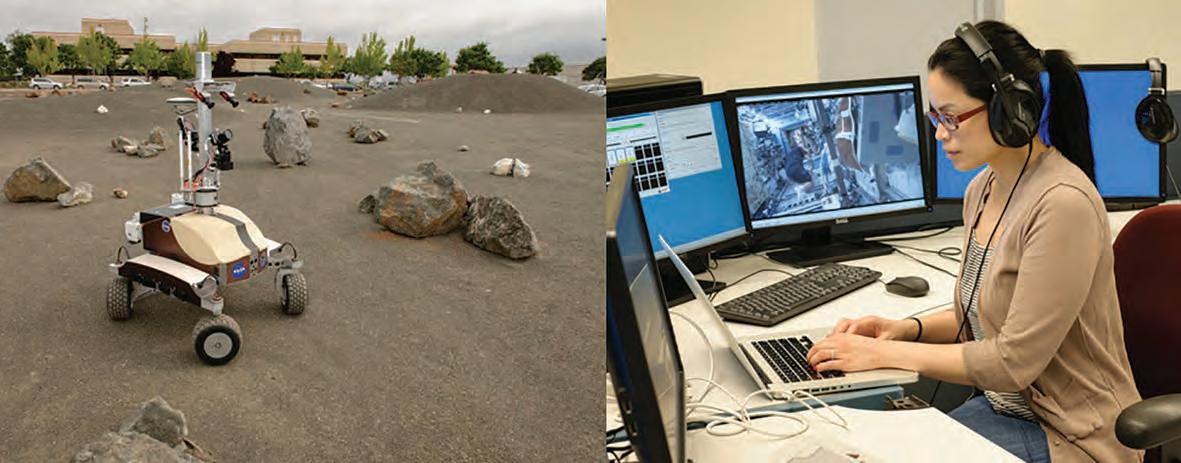
Estrellina, right, on console as science lead in the Multi-Mission Operations Center while, left, K10 Black planetary rover navigates the boulder field in the Roverscape during a Surface Telerobotics Operational Readiness Test at NASA Ames Research Center. Credits: NASA/Dominic Hart.
The Honorable Delores M. Etter presented Estrellina with the 2006 Top Scientists and Engineers Award Image credit: NIWC PAC
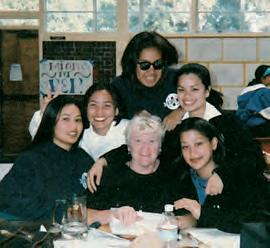
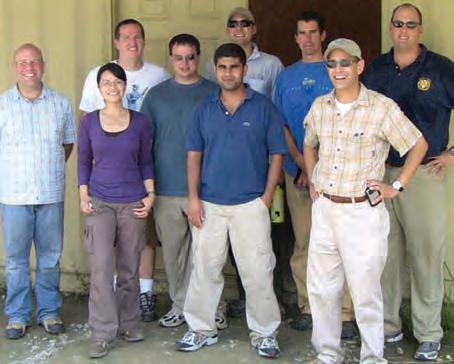
"hated" science. At the University of San Diego, they offered freshmen preceptorial classes to learn more about the different majors. She took one in engineering and was stunned to find that she was one of only three females in a class of 20. She remembers being bothered by that ratio and thought “girls can do this” too! So she took up the challenge and enrolled as an electrical engineering student the following semester. Ester graduated from the University of San Diego with a BS and BA in Electrical Engineering, and she attained a Certificate in Systems Engineering from UC San Diego. Ester is currently applying new science applications and technologies in the robotics area that are meant to improve how we live. She feels that being a female in a traditionally male-dominant career proves that women are equally capable. It is her hope that this inspires young women to not necessarily become an engineer, but to simply know their worth and their accomplishments are not pre-determined for them. When reflecting on her Mercy education, Ester felt that the close community, small classes, and single gender environment allowed her to find her voice and helped build her confidence. She said, "My homeroom teacher Mrs. Biernat couldn’t have been more caring about her students. She was funny and down to earth, which made it easy to confide in her. Having at least one teacher that you feel comfortable talking to can make a huge difference." Her love for math also grew from her Mercy teachers, the Nocetti sisters. "They somehow found a way to make even trigonometry class entertaining through their humor and teaching strategies. I vividly remember their silly drawings on the overhead projector. I honestly found many math concepts difficult, but I enjoyed being in the classroom with them."
What's Ester's advice to Mercy students aspiring to be an engineer?
She says, "There isn’t a specific set of classes you need to be good at or take in high school to be an engineer. The general education at Mercy will prepare you, and you should take advantage of opportunities like Mercy's Robotics Team. Coding is more available to high school students these days, so if you enjoy that, then I encourage you to continue having fun with it because there’s so much to learn with coding." Her advice is to find a way to create every day in as many different ways as you can. And this can be done in multiple forms not related to math or science, such as writing stories, pursuing the arts, cooking a new dish, or compiling a complex video reel. But do it with purpose! Anyone can learn the specifics of the engineering discipline, but you can’t teach someone how to be imaginative. And that’s what really makes an engineer.
Estrellina managed a research & development project from 2008-2012 at NIWC PAC that developed a prototype system to autonomously sense, explore, and map its environment. Pictured with her team and retired Technical Director Bart Everett. Credits: NIWC PAC
Estrellina led her team in 2009 at an autonomous unmanned ground vehicle experiment conducted with gov’t/industry partners and Officer Candidate School (OCS) cadets. They investigated the effects of progressive levels of autonomy and speech control on robotic task performance. Credits: NIWC PAC
